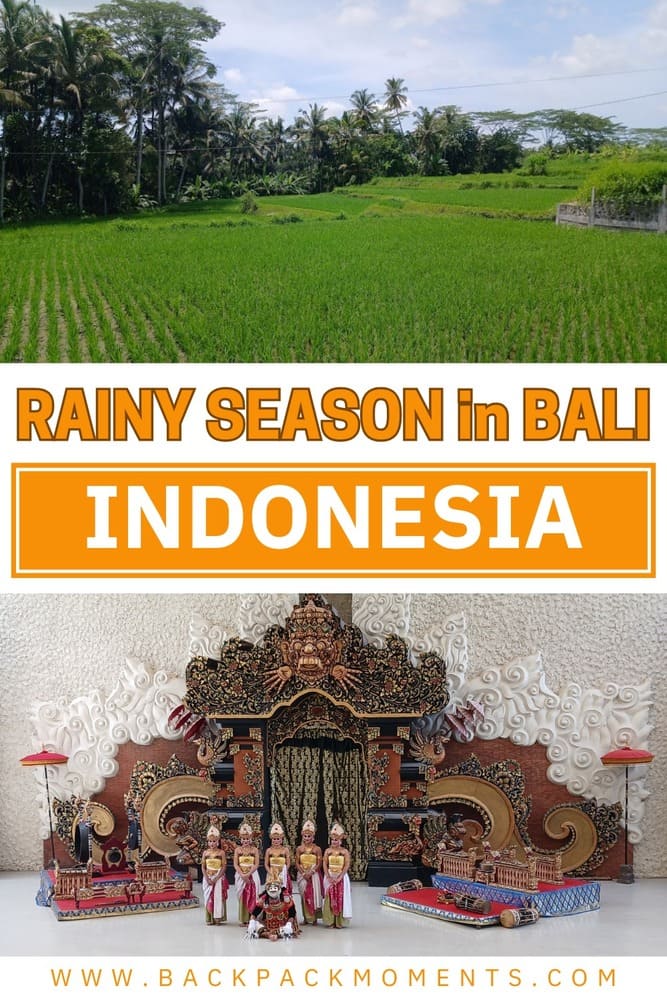Rainy Season in Bali: How Wet Does it Get?
This post may contain affiliate links. If you make a purchase using one of these links, I may receive a small reward at no extra cost to you. See my Disclosure Policy for more information.
Bali is often referred to as a tropical paradise. As with any other place in the tropics, it experiences only 2 seasons – rainy and dry (musim hujan and musim kemarau in Indonesian).
Many people imagine the rainy season in Bali as a time of extreme floods, non-stop downpours, stormy skies, and a miserable holiday but that’s just not the case.
It’s way more accurate to imagine Bali during the wet season as a green lush jungle, gushing waterfalls, a bit of rain now and again, and all in all still an awesome time for a beach holiday.

I spent 27 days in Bali during the rainiest month – January and here I’ll share with you just how wet Bali gets and all you need to know about it.
When is the Bali Rainy Season?
The rainy season in Bali starts in November and ends in March.
Most years. Sometimes it starts in October. Or December. And ends in April. Or May.
You know what, just look at this graph of average rainfall:
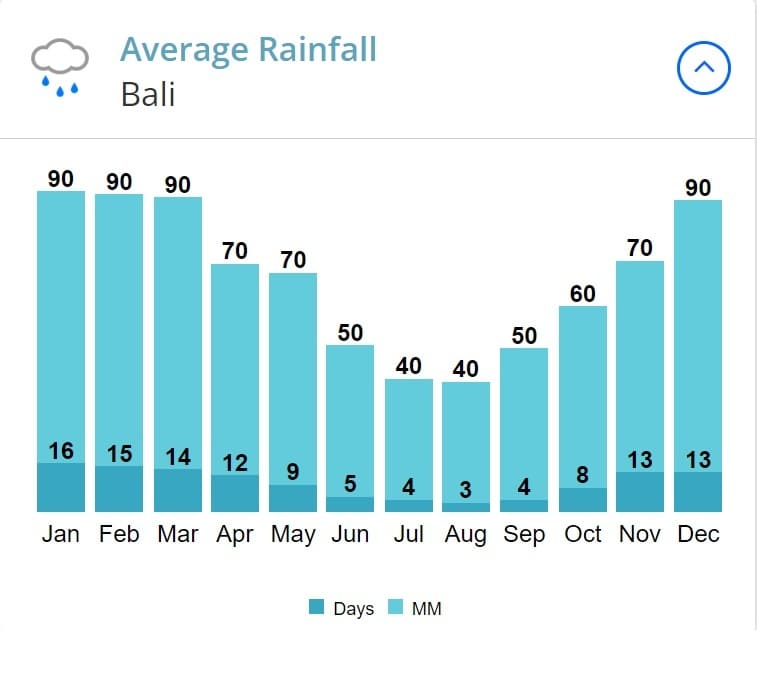
With global warming and changing weather patents, its beginning and end are becoming ever more unpredictable.
The rainiest months are December, January, and February.
I spent some time in Bali in January, so my experiences are from the absolute most rainy the island is.
Bali weather is NOT uniform!
Bali is a relatively small island but not so small to have the same weather everywhere.
Bali has highlands and areas above 2000 meters which can get pretty cold at night! But let’s focus on the rain.
In general, the higher a place is the more chance of rain. That means that lower parts in the south of Bali experience less rain. That includes Kuta, Denpasar, Uluwatu, Nusa Dua, Sanur, Canggu, and Seminyak among others.
Ubud is not that high (only around 210 meters) but still sees noticeably more rain than the low south.
The high interior sees the most rain – Kintamani, Besakih, Bedugul, etc.
The towns on the north coast also see more rain than the south due to their proximity to the mountains – Singaraja, Lovina, and others.
So why do forecasts say storms every day?

If you look at a forecast for Bali in the rainy season, you may see that every day is predicted to be stormy.
But remember that Bali is not that small of an island! There will be a storm somewhere but not everywhere!
The chance of you experiencing a storm every day for a week (no matter if staying put or traveling around) is minuscule. Don’t worry too much about it!
My January in Bali
As I mentioned, January is considered the wettest month in Bali.
I think I was pretty lucky because it didn’t rain all that much. Only 10 of the days I experienced some rain and many of these were short, slow rains not even enough to make me look for cover.
One time near Green Bowl beach it rained heavily for 1 hour, followed by 1 more hour of slow rain. One more tropical storm hit the southern peninsula during one of the nights. That’s all the rain I experienced in South Bali (Jimbaran, Uluwatu, Nusa Dua).

In Ubud, most of the rain was short and slow. Small droplets. Wasn’t even enough to get my hair wet. There were 2 big storms during the day (shorter than an hour) and 1 during the night.
Take my experience with a pinch of salt. No two Januaries are ever the same. But I spent a considerable amount of time in Java the previous rainy season and it really doesn’t rain as much as people make it out to.

All in all, it didn’t rain all that much and I managed to visit most of the popular attractions in Bali.
Temperature in Bali during the rainy season
Bali is warm year-round. In the lower parts, the temperature rarely drops below 20 Celsius (68 F) at night and 24 C (75 F) during the day.
The coldest months are July and August when it barely rains at all. This means that Bali is hottest (albeit only marginally) during the rainy season.
It may feel even hotter during the day due to ‘muggy weather‘. The very high humidity will make it seem like it’s much hotter than the scale shows.
But this also means that you will love it when it rains. The rain clears the air and cools down the asphalt and the buildings. After a rain, Bali feels cool and delightfully pleasant.
Rain’s Impact on Nature
If you want to see the rice fields in all their glory, go to Bali in the rainy season.
The landscape is bright green with lush vegetation everywhere. Whereas the dry season has Bali looking “just fine”, the rainy season is when all those beautiful pictures of impressive vistas are taken (don’t forget most have also been enhanced on Photoshop, but I digress).
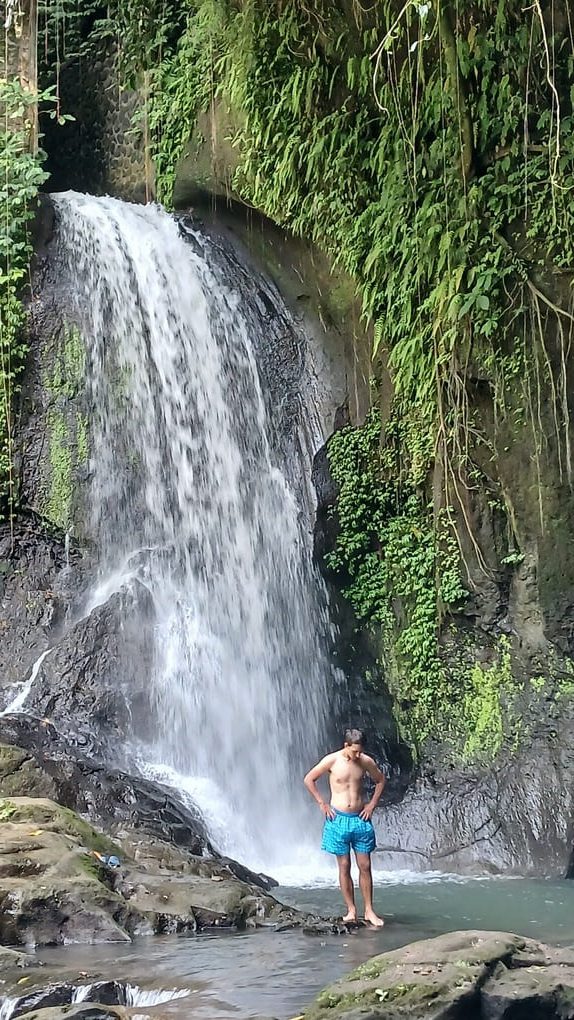
Waterfalls also experience a revival. More water means more flow, of course. They cascade gracefully down cliffs, some hidden away in secret nooks, others out in the open but all much more voluminous than in July or August.
Rivers also become lively torrents, rejuvenating the surroundings and providing unique photography opportunities.
Bali is the most beautiful during the rainy season!
Cultural Significance of Rain in Bali
Water is holy in Balinese Hinduism!
Now, I won’t claim to be an expert on Balinese beliefs about water, but the sheer amount of water temples on the island (any temple with “Tirta” in its name, i.e. Tirta Empul and Tirta Gangga) is a testament to its importance.
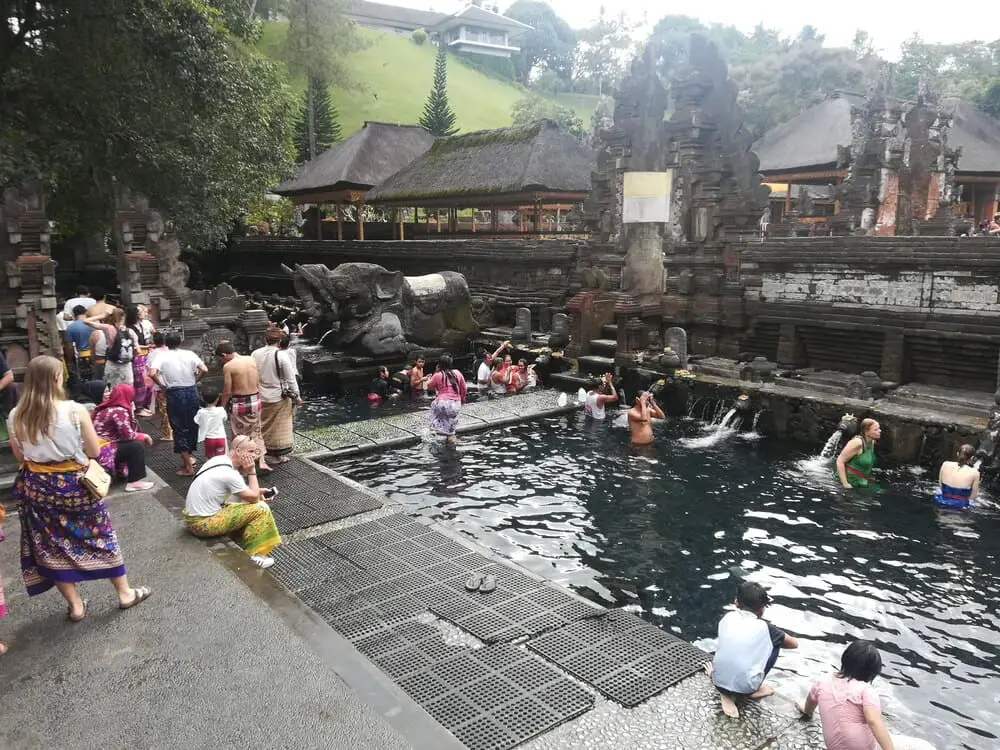
There is also a term that describes the holiness of water – Agama Tirta.
You can also go to Tirta Empul to participate in a cleansing and purification ceremony with the local Hindus.
Let’s not forget about the complex irrigation system called Subak. It distributes water from the mountains to the rice fields and is Bali’s only UNESCO World Heritage (although there are a couple of sites on the island, all part of Subak).
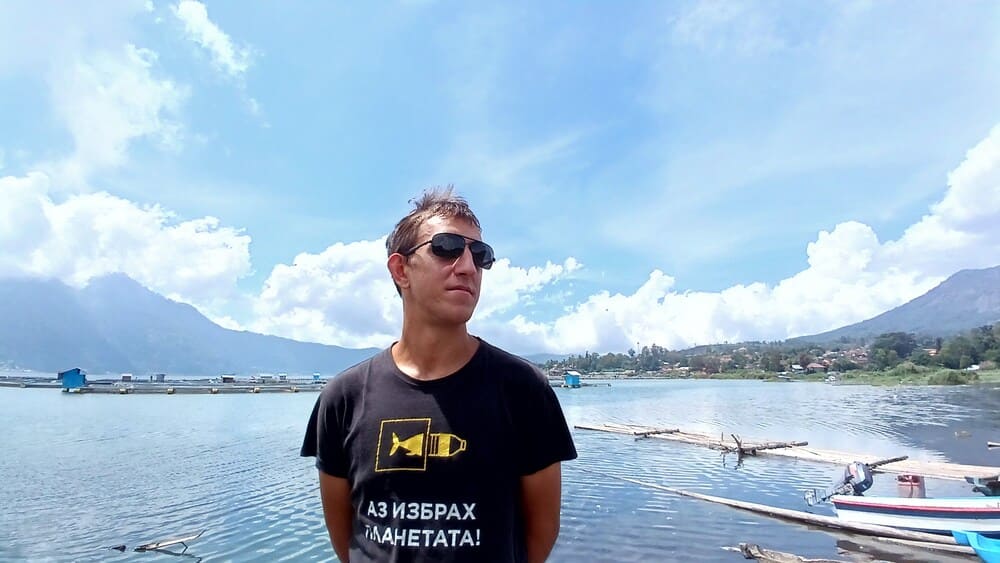
Challenges and Precautions (aka Balinese rain can be dangerous)
Natural Hazards
Bali’s drainage system is a bit wonky. If it rains A LOT, it will inundate it and create flash floods. To help with that, the locals open up holes in the sidewalk to help the water drain more easily. I once fell into one because I wasn’t careful, so I am not very fond of these. So, anyway…
In South Bali where there is more asphalt than earth, the water can become too much too fast and there have been instances where the flood is pelvis-deep. If that’s even a way to measure. But it’s rare, it’s usually no deeper than the sole of your shoe and only for a little bit.
Landslides are also possible the higher you go on the island. Be careful where you explore after heavy rain as the earth may be unstable still.
Transportation
I strongly advise you not to drive a scooter during or right after a downpour.
For starters, it HURTS! Rain in Bali is heavy, as in the droplets themselves are big! Add to that your speed on the bike and they feel like small lead pellets hitting your face or arms.
And the roads will be slippery, which is just dangerous, no details required.
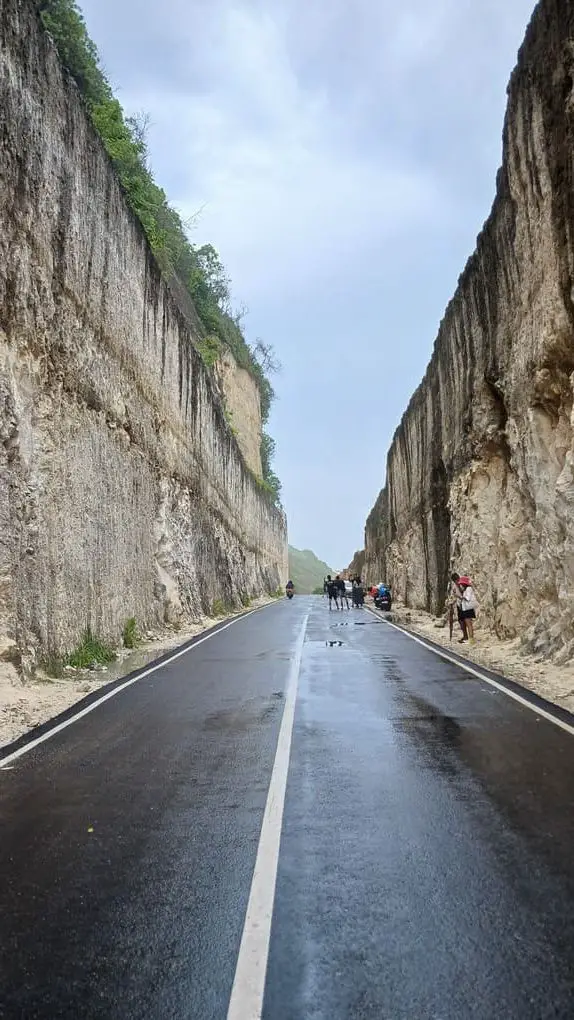
Instead, opt to stay indoors during the rain (or wait it out in a local warung if caught outside on a scooter) and be careful when you go on the road again.
If you absolutely must go somewhere and it’s raining, get a car taxi (Grab or GoJek, or a local driver, or Bluebird). They are affordable and a car is much safer (and more comfortable) than a motorcycle in the rain.
Prices
As you can imagine, enough people are put off by the chance of a bit of rain to make the rainy season the low season in Bali. At least on paper.
Prices are lowest during January but note that Bali is a year-round destination anyhow, so you won’t be getting massive discounts. Indonesia is a very cheap destination too, so how low do you think the prices can drop – not that much!
Keep in mind that holidays create pockets of high season. Christmas, New Year and the Chinese New Year all fall during the rainy season and that’s when Bali is the most crowded. You know what that means for prices, economics 101.
Activities during the Rainy Season in Bali
Now let’s say you draw the short stick and experience a week of non-stop rain. Unlucky, yuck!
Indoor Activities
Unlucky, but not in Bali! It’s an island focused on tourism and there are plenty of indoor activities for those gloomy days.
Here are a few of my suggestions:
- Silver Jewelry making class in Sukawati;
- Balinese Cooking Class;
- Woodcarving Masterclass;
- Nusa Dua Theater: Devdan Show;
- Massage at your accommodation;
- Escape Room in Kuta;
- Learn these Indonesian phrases;
Can you go to the beach during the rainy season?

Yeah, of course!
It rarely rains for longer than 1-2 hours. And after that, it all goes back to being sunny and warm.
Bali is all fine for a beach holiday in the rainy season, just be prepared to take cover on short notice.
What about hiking/trekking?
All treks advertised on Bali run in full swing during the rainy season. Mount Batur sunrise trek is one of the most popular and there are tours every single day.

Now, if you go to some off-path rice terrace, or down a path leading to a waterfall, it may be extra muddy. But you can go, nothing is stopping you. Just don’t put on your best shoes and be careful where you step.
Surfing?
I’m not a surfer, so I don’t know exactly. But I’ve heard that the west coast of Bali is not good for surfing during the rainy season.
In January, I saw surfers on several beaches on the south rugged coasts, around Uluwatu and in Nusa Dua. There were some pretty big waves too! So I can imagine you can surf, no problems.
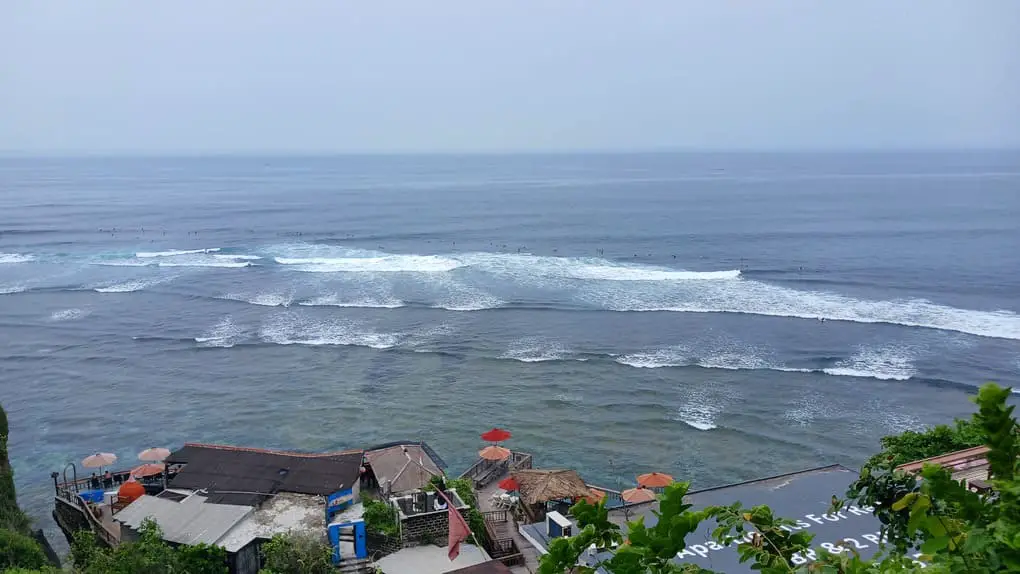
Rainy Season Elsewhere in Indonesia
Indonesia is a massive country! From one end to the other, it’s longer than both Europe and the US!
As you can imagine, the rainy season is NOT the same everywhere. Different islands experience it at different times throughout the year.
I’ve compiled the information in the most succinct way possible in this Rainy Season in Indonesia guide.

